
In the first part of our series, we explored the major trends that will influence the mobile system-on-a-chip (SoC ) market over the next five to ten years. This sets the backdrop for looking at the architecture for future SoCs and the specific players within this market, both critical IP players as well as the actual SoC vendors. For the most part, this focuses on mid-range to high-end devices, rather than the lowest-end smartphones and tablets. This means that some SoC vendors have been omitted, for the sake of clarity and brevity.
SoCs today
The vast majority of smartphones today are single- and dual-core SoCs. At the very high-end, there is a smattering of quad-cores. The same is mostly true of tablets, although the larger power budget means that the processors tend to skew towards higher core counts. The CPU cores are clocked at around 1GHz, and the more advanced ones feature out-of-order execution and modest superscalar issue, typically two to three RISC instructions per cycle at peak. Simpler cores for more power-constrained systems tend to be in-order and issue one to two instructions per cycle. This level of complexity is generally on-par with the CPU cores found in the early to mid 1990s.
Realistically, it is hard to see any benefits from quad-cores in mobile devices. The majority of PCs today sell with dual-core CPUs, and that is a reflection of the state of software; multithreading is hard and most applications are single threaded. Software for mobile devices is even more primitive and less amenable to threading. Comparing a quad-core to a dual-core at the same power, the dual-core should be able to reach about 25 percent higher frequencies (power scales roughly with frequency cubed). For the vast majority of workloads, a faster dual-core CPU will have better performance. Despite this fact, there appears to be some marketing value for quad-core SoCs, even if the delivered value is minimal.
One reflection of the divergence of smartphones and tablets is the graphics for these devices. Tablets have higher-performance graphics to drive the larger and higher-resolution displays and to make use of the greater power envelope. The actual GPU cores are usually the same, but with more cores and higher frequency for tablets. Looking at the iPhone 5 and iPad 4, the latter GPU has about 3X the shader throughput measured in FLOP/s (~100 vs. ~30 GFLOP/s). In terms of performance, the iPhone 5 is roughly the equivalent of a very low-end discrete DX10 GPU from 2007, while the iPad 4 resembles a mid-range model.
The other significant blocks in a mobile SoC are the wireless modem, which is often discrete for high-end phones and tablets (i.e., LTE devices), along with dedicated hardware for video encode/decode and image processing for the camera.
Power management ties together all these blocks and is particularly vital, since performance is limited by both the battery life and skin temperature (i.e., how hot the case gets). Simply put, there isn’t enough power or cooling for every block to be in a high-performance mode simultaneously. For example, when running a strenuous game, the display and GPU will draw much of the power; the CPU will actually have to reduce frequency and voltage to deliver the best overall performance. This becomes even more complex if there is significant wireless traffic as well.
SoCs of the future
Looking out 5-10 years, Moore’s Law means that transistors will be even cheaper. However, battery technology improves slowly and the maximum skin temperature is constant. Consequently, power will be even more of limiting factor in the future than it is today. So techniques that spend transistors (or area) to reduce power will be increasingly attractive.
While change is slow, eventually mobile developers will be able to take advantage of multiple cores. At this point, quad-cores can be more efficient by reducing frequency and voltage, as the PC industry has shown. Most workloads will still be single threaded and need high frequencies, so the SoC must be able to efficiently deliver both aggregate throughput and single-core performance. Eventually, almost all mobile SoCs will move to quad-core to handle the few cases of properly parallelized code.
The CPU cores will also become more sophisticated, improving single-core performance through both frequency and instructions per cycle (IPC). However, this evolution will be slow and steady because CPU performance is non-linearly expensive (in terms of both area and power) beyond a certain point. Many workloads simply cannot reach high IPC because of the nature of the code. One way that the industry has looked to get around this issue is with heterogeneous cores, which ARM bills as “big.LITTLE." This method pairs a small and efficient core with a larger and more complex core and switches between the two. The challenge again is power; these big cores can only be active one to five percent of the time, which limits the potential performance gains, and the switching penalty is an issue. Initially, there seems to be some interest in this solution, but it is unclear whether this will be a long-term solution for most vendors.
Graphics are an entirely different story because the workload is inherently data-parallel. While there are limits, desktop GPUs have shown that performance scales nicely up to at least 1-4 TFLOP/s if memory bandwidth increases commensurately (to roughly 200-250 GB/s). To a large extent, this performance will be used to deliver higher-quality graphics for 3D applications or better energy efficiency. Display resolutions may increase, but at a relatively slow pace considering today’s high-density displays and the slow rate of change for TVs and other external displays. Given the benefits of Moore’s Law, this means that GPUs will consume more and more die area, while keeping frequency and voltage relatively low to improve performance and energy efficiency. This is also one of the greatest motivators for any form of memory integration (whether in-package, 2.5D, or 3D), as there is simply no other way to provide enough bandwidth given the power constraints.
Image signal processors (ISPs) are also exquisitely parallel, just like GPUs, but the main driver is enhancing still and video images. Current cameras are strongly limited by the low quality and compact physical dimensions of optical lenses in mobile devices rather than the sensor resolution. In such a scenario, ISP performance will grow slowly, motivated by more sophisticated filters rather than higher resolution. However, an array camera could improve lens quality and motivate much more robust ISPs in the future.
The video-encoding and -decoding blocks are typically fixed function and will be upgraded to take advantage of the emerging High Efficiency Video Coding (HEVC) standard.
Over this time frame, the wireless landscape will be relatively stable. The industry is currently undergoing the transition to LTE, although the various 2G and 3G protocols will be crucial for backwards compatibility in areas with spotty coverage. LTE will certainly progress to higher speeds, but there is no replacement on the horizon for the next ten years or so. Some high-end phones, and most tablets, may continue to use discrete LTE modems for performance and flexibility, especially for vendors without internal wireless expertise. However, most smartphones will integrate the various modems into the SoC, reducing cost and power.
Of course, these guidelines are not absolute, and SoCs will vary to cover the full range of the market. Devices like the Kindle e-reader hardly need a lot of graphics performance, and budget devices may continue to use single or dual cores for many years.
Licensed CPUs
The most pervasive mobile IP company is unquestionably ARM. ARM is particularly well-known for licensing the eponymous instruction set (e.g., ARMv7 and v8), the Cortex cores (e.g., A7) that implement it, and other SoC components such as the AMBA interconnect. Nearly every company in the mobile ecosystem is an ARM customer in one fashion or another.
One big trend we mentioned earlier that impacts ARM is the shift toward vertically integrating IP. Today, ARM has a large number of customers that license the Cortex A-series for mobile devices, including Broadcom, Mediatek, Nvidia, Texas Instruments, and Samsung. In contrast, the larger SoC vendors such as Apple and Qualcomm prefer to license the instruction set and design their own CPU cores. The latter approach requires more engineering talent, but ultimately costs less in terms of royalties; essentially it is a trade-off between fixed and variable costs.
Long-term, companies with sufficient volume will shift from licensing CPU cores to licensing the ISA and designing the cores. ARM’s cores are by necessity somewhat generic, since they must be attractive to all customers and compatible at all the major foundries (TSMC, GlobalFoundries, UMC, and Samsung). In addition to cost advantages, a custom core can be carefully optimized for the target applications and the underlying manufacturing.
Another issue is the divergence between tablets and smartphones. It is very hard to design an optimal CPU core for radically different power limits, and at some point the tablet market may grow to be large enough to merit a more carefully optimized design. The sweet spot for tablet SoCs is around 2-6W, versus 0.5-1.5W for a smartphone. It may prove more efficient to have two different cores to spanning the full range from 0.5-6W rather than using a single design.
Licensed graphics
Graphics IP is a rather different business, because the software interface is an API rather than an instruction set. Actual graphics cores are licensed and accompanied by drivers targeting OpenGL (iOS, Android, Linux) or DirectX (Windows). More recently, GPU compute has become important for mobile devices with OpenCL and DirectX Compute Shaders. These drivers are massively complicated, often rivaling the complexity of an operating system.
The leader in graphics IP is quite clearly Imagination Technologies, which has roughly five times the market share of the nearest rival. Recently, ARM has ventured into the mobile graphics IP business, although it is still a very small player and most of its design wins have been due to bundling the CPU and GPU together. There are also a handful of lesser IP companies such as Vivante, DMP, and Takumi.
Some companies have internally developed graphics, but that is increasingly difficult given the growing complexity of modern APIs. Only the largest companies (or those with existing graphics expertise) can justify the cost of developing a GPU and multiplatform drivers. DirectX in particular is a new challenge for many companies as Microsoft builds its presence in tablets and phones (realistically none of the licensed GPUs support DX10+); handling GPU compute is also extremely difficult. In contrast to CPUs, there is not likely to be a huge shift toward internally designed GPUs. In fact, several companies such as Broadcom and Samsung will probably abandon their internal designs and replace them with a licensed core from Imagination or ARM, or acquire one of the lesser IP vendors.
SoC Vendors
In terms of actual hardware, we will look at the major players in smartphone and tablet SoCs today (Apple, Samsung, and Qualcomm) and a few companies that are expected to become significant over the next few years (Nvidia and Intel). It is important to note that Apple and Samsung face a rather different fate than the others, largely because of the high degree of vertical integration.
Apple
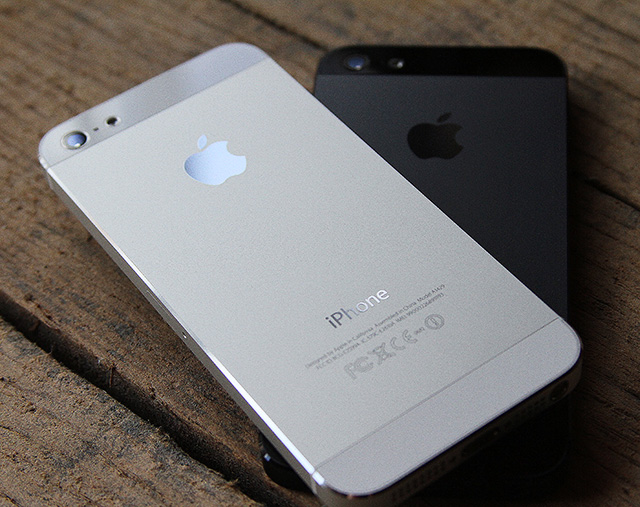
Apple's flagship smartphone.
The undisputed golden child of the mobile world is Apple, which redefined the smartphone and tablet markets with the iPhone and iPad. Apple has historically set the bar for high-end smartphones and tablets and is the number three and number one device vendor, respectively. Apple’s position is substantially stronger in tablets, where there is less competition, as the market is newer.
Apple internally develops SoCs for phones and tablets, with manufacturing at Samsung. The company recently moved away from using standard ARM cores for the A6 and A6X, instead relying on the custom Swift core. While Apple owns nearly all the IP used in its chips, the one exception is graphics, which is supplied by Imagination Technologies. Given that Apple owns around 10 percent of Imagination and is its largest customer; it is hard to envision the iPhone maker designing a GPU, even though it has sufficient volume. Apple has historically relied on discrete wireless modems from Intel, but it currently uses Qualcomm for newer devices.
Realistically, Apple will continue to design SoCs and have them fabricated with a foundry, although it is likely they will shift to a foundry that isn’t a competitor. History is instructive here; Apple derives significant benefits from controlling the entire platform, something it once attempted with PCs based on IBM and Motorola CPUs. Apple only abandoned that hardware platform and switched to Intel’s x86 once the PowerPC vendors could no longer deliver competitive offerings because the economics were totally unsustainable. That isn’t a scenario that is likely to repeat itself for some time, given the fact that Apple is selling well over 200 million iPhones and iPads a year.
The divergence between phones and tablets may be a technical challenge for Apple. So far, the iPad SoCs tend toward the lower end of the tablet power range, which means that the same CPU cores can be used for the iPhone and iPad. However, if Apple wanted greater differentiation, it might become attractive to license a core from ARM or more likely, design a second microarchitecture.
Apple’s fate largely depends on the overall market and whether it chooses to embrace lower-cost devices. While the mobile market is growing rapidly, much of it is in the developing world where costs are a significant issue. To a large extent, the growth is coming as the price delta narrows between a feature phone and smartphone, prompting people to switch. If Apple stays the course and continues producing relatively expensive devices, it will forgo the growth from countries like India and Brazil. Instead, its market will largely be limited to the developed world, which is quite saturated.
Reducing the price of the iPad and iPhone is a systemic challenge. There is no single component of the iPad that is obviously a huge contributor to cost and could be eliminated; instead the changes must be pervasive in nature. The same is mostly true of the iPhone, with one exception. To properly address the mainstream and low-cost smartphone market, Apple would need to develop or acquire a multi-mode modem (i.e., capable of 2G/3G/4G) and integrate it into the iPhone SoC. While this is not impossible for a company with Apple’s resources, it would be a lengthy and difficult process.
The challenge in the developed world will be twofold. First, holding off Android and/or Windows-based competitors, and second, providing a reason for consumers to upgrade rapidly. To a large extent, both of those are system level, rather than SoC, challenges. The history of the PC suggests that the more diverse ecosystems will eventually eclipse proprietary platforms as the market becomes larger and more diverse, but this process may take years.
Samsung
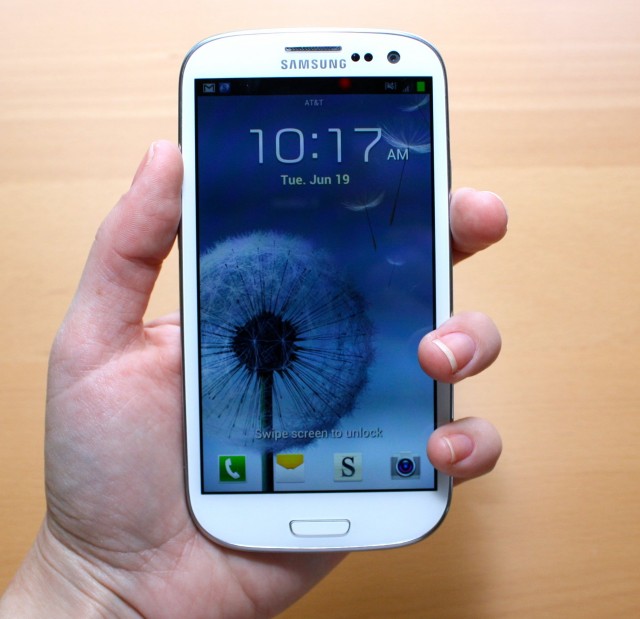
The Samsung Galaxy S III.
Samsung is the other quasi-vertically integrated company, selling handsets and tablets as well as manufacturing the Exynos SoCs, NAND flash, DRAM, and displays in many of their own devices. Ironically though, the company extensively relies on third-party IP. Samsung licenses CPU cores from ARM and GPUs from both ARM and Imagination. The company also has an internal GPU design, but there is little evidence that Samsung is developing the graphics and software expertise necessary for high-end devices.
Unlike Apple, Samsung is a firm believer in spanning a wide range of price points and working in many markets. Samsung was the largest phone vendor by shipments in the last quarter of 2012 and is a distant second behind Apple for tablets. With these volumes, it's surprising that the company has not taken yet another page from Apple and designed its own CPU. Given that Samsung has hired a large number of ex-AMD designers, it is likely that a custom core is underway and will be forthcoming in the next several years.
Samsung’s vertical integration is both a blessing and a curse. Like Apple, the company has tight control over the platform (excluding software, of course). However, it seems unlikely that many competing handset vendors would be eager to buy the Exynos platform. Given the volumes involved though, it is not necessary that Samsung sell SoCs to external customers.
While Samsung currently licenses standard ARM cores (the most recently announced version features 4 big.LITTLE core pairs of the A15 and A7), it is nearly certain that the company is developing a custom architecture that will be released in the next few years. Samsung has tremendous volume to support a proprietary core and has been hiring a large number of CPU designers; such a move would offer both differentiation and lower costs.
On the graphics front, Samsung will rely on third-party expertise for advanced GPU designs, rather than extending the roadmap for the internally developed GPU. The company simply does not have the driver expertise required for modern APIs. In the past, Samsung has used both ARM and Imagination (for different SoCs), and such a dual-sourced approach will probably continue to keep the two suppliers honest. In theory, Samsung could acquire one of the smaller GPU vendors, such as Vivante. However, most of the smaller vendors are behind in terms of drivers and the overall ecosystem. The software challenge would be smaller than an internally developed design, but still quite considerable.
Samsung also has an internally developed LTE modem, which is used in high-end smartphones today. While the first generation product is a discrete component, eventually the modem will be integrated into a multi-mode chip for lower cost.
Going forward, Samsung is in a very strong position to take full advantage of the adoption of smartphones and tablets. Unlike Apple, the company is eager to cater to a variety of consumers and will clearly benefit from the growth in the developing world. The high degree of vertical integration is a real asset, boosting margins and control over the platform and offering differentiation against other competing Android and Windows platforms. While Samsung’s market share might decline as other companies emerge as viable contenders and due to the fears of rival handset vendors, they will be a key player for many years to come.
Qualcomm
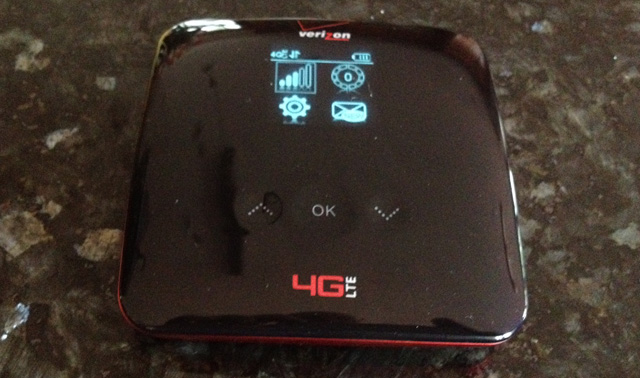
The Verizon 4G Jetpack Mobile Hotspot 890L uses a Qualcomm LTE modem.
Qualcomm is the acknowledged king of wireless. In the mid 1990s, Qualcomm pioneered (and heavily patented) CDMA, which forms the basis of most modern wireless communication. Many other firms pay royalties to Qualcomm, and the company is typically first to market with new wireless modems. As a result of this expertise, Qualcomm modems are industry leading and commonly sold together with SoCs under the Snapdragon brand name. The company is the largest merchant vendor of smartphone chips.
Qualcomm internally designs nearly every piece of IP required for smartphones and tablets, though the company is fabless and reliant on external manufacturing. Qualcomm is a longstanding ARM architecture licensee, with two custom cores: Scorpion and Krait. The former lies between the Cortex A8 and A9 in performance, while the latter is comparable to a Cortex A15.
The Adreno graphics (respelled: Radeon) were acquired from AMD shortly after the ATI acquisition. The current GPU is a modern, unified shader design with OpenCL 1.2. Ironically, the driver ecosystem is lagging behind the hardware. Despite being the GPU for the Windows Phone platform, it is incapable of DX10+ and relegated to DX9. Coming from the smartphone world, Qualcomm has less experience with both the Windows ecosystem and the higher performance targets for tablets.
Qualcomm was first to market, and for all intents and purposes is still the only company with an LTE modem today. It has a multimode product that is quite compelling for phones, although not particularly helpful for tablets. Some SoCs already offer an integrated multimode LTE modem, a significant advantage over the competition.
Qualcomm is in a uniquely strong situation at the moment, given its dominance in wireless communications. Its time-to-market advantage for LTE modems has translated into a tremendous market presence for the Snapdragon platform. Since many customers need Qualcomm’s LTE modem, it's easy to convince them to buy a bundled SoC as well. However, for tablets, the company has made very little progress, because wireless is not very important; it appears that the actual SoC performance is not strong enough for tablets
This hints at a big challenge over the coming years. Right now, Qualcomm is at a high point from both discrete LTE modem sales and the attached SoCs for many smartphones. In the coming years, Broadcom, Intel, LG, Nvidia, Samsung, and others will roll out discrete and integrated LTE modems, fundamentally changing the ecosystem into a competitive market. This will level the playing field and undermine a crucial Qualcomm advantage. The result will be an increased emphasis on the SoC, particularly the CPU and graphics, an area where Qualcomm appears to be weaker.
As a result, Qualcomm has to step up the investment in custom CPU and graphics to improve the SoC platform. The latter seems to be the more challenging of the two areas. As noted above, Adreno has targeted OpenGL for many years, but the team has less experience with modern graphics APIs (particularly Windows) than other companies. The other challenge for Qualcomm is navigating a future where SoC design and manufacturing are more and more closely entwined. The company already works with foundries to develop process technology, and that expertise will become more valuable over time.
Overall, Qualcomm has a bright future ahead. In all likelihood, the company will continue to be the leading merchant SoC vendor for smartphones for many years. However, Qualcomm is likely to be at a peak in terms of market share, as competitors gain expertise with LTE and catch up in terms of wireless connectivity. The market is growing fast enough that Qualcomm will still probably grow, just at a slightly slower rate.
In tablets, Qualcomm has an opportunity to expand as the Snapdragon platform becomes more compelling. Given the company’s minimal presence, it would be surprising if Snapdragon did not become a significant platform, but there is no real reason to believe that Qualcomm will become a dominant player.
Intel
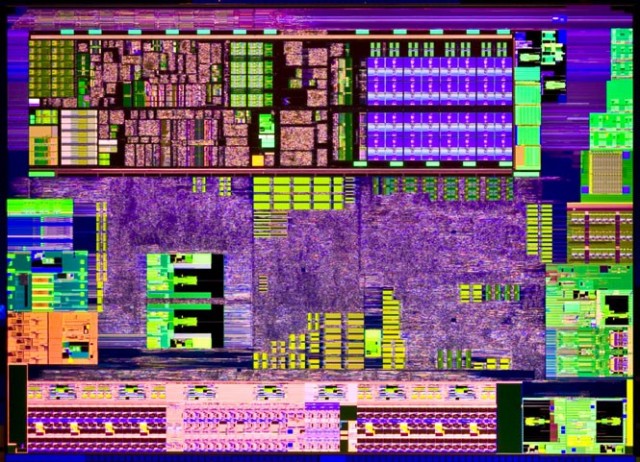
The Intel Atom die.
Intel is the titan of the semiconductor industry; it's renowned for process technology that's two years ahead of the rest of the world in terms of the actual node (e.g., 22nm vs. 28nm today) and four years in terms of performance enhancements such as (multigate architectures) FinFETs. Intel’s design teams are world class and the x86 SoCs are the standard for PCs and servers, where Intel is the dominant player by every metric. Despite these formidable assets, when it comes to tablets and smartphones, Intel is largely on the outside looking in.
Over the last two to three years, Intel has shifted to focus on mobile. This has been a slow process, because it spans both manufacturing and design. Realistically, this shift won’t be complete for another year (or longer). Intel’s mobile manufacturing is currently on par with the foundries, albeit with higher performance; the company aims for the normal 12-18 month process technology lead in the 2014-2015 timeframe.
Intel owns nearly all the IP necessary for mobile devices. Intel’s x86 CPU cores are quite differentiated; the high-end cores (e.g., Haswell) are unmatched throughout the industry, whereas the current-generation Atom is frankly an antiquated in-order design that delivers surprisingly competitive performance. These cores are compatible with older Windows applications, a unique selling point. Of course, Android is mostly oriented around ARM, which is a potential challenge. While there is a small performance/power disadvantage for x86, it is quite minimal and no barrier to a company with the resources of Intel.
Intel’s smartphone graphics are licensed from Imagination Technologies, while it appears that tablets will probably rely on the internally developed Gen architecture, which is also used for client PCs. The Gen graphics have never been regarded as industry-leading for PCs due to years of neglect. But the power efficiency is very good, and in recent years the Gen architecture has become quite respectable. Intel also has far more experience with the graphics ecosystem than all save Nvidia and Imagination.
As part of shifting into mobile, Intel purchased Infineon Wireless, widely regarded as the best 2G/3G modem vendor. Currently, the wireless modems are discrete and there is no LTE version available yet.
Intel’s SoCs are already reasonably competitive using an outdated CPU design, which will be updated to a new out-of-order core at the end of this year. More importantly, Intel has set an aggressive roadmap for process technology and boosting CPU and graphics performance that will be hard to match.
Future SoCs will use a low-power Atom core for smartphones and more compact tablets (e.g., ~2-6W), with the high performance cores for high-end tablets (e.g., ~5-8W power budget). Intel will continue to use Gen graphics for tablets, because of the superior Windows drivers compared to Imagination. For smartphones, Intel’s design team will use Imagination for several years to come; however, it seems possible that it will try and adapt the Gen architecture below the 2W level to provide an internally developed option.
On the wireless front, there seems to be some delays in terms of rolling out an LTE modem; but the expertise and resources are in place, with an integrated product expected in late 2014 or early 2015. In the meantime, the company can certainly offer a good product for carriers without LTE.
Overall, Intel is still pulling all the pieces together for smartphones. There may be some initial progress this year, but realistically the company will spend the next year earning the trust of OEMs and will not have any substantial advantages until 2014 and 2015. At that point, it is likely that Intel will be able to offer products with superior performance by virtue of its manufacturing advantage. This does not guarantee success, but it sets the stage for Intel to make real progress and gain market share. Even with a sustained advantage, though, the best-case outcome for Intel is becoming a significant player but remaining behind Qualcomm in smartphones.
In tablets, Intel should have viable products earlier and make more significant gains. First, tablets are closer to PCs with a minimal reliance on wireless, so the delays for LTE are mostly irrelevant. Second, an x86 processor offers full Windows compatibility, which is a significant benefit, especially for business users. Third, Intel will have a product portfolio with high performance CPU and GPU cores, which will be hard for competitors to match. Last, the tablet market is still developing and therefore much easier to enter. While it is hard to imagine Intel as the largest merchant SoC vendor for smartphones, it is conceivable for tablets.
Nvidia
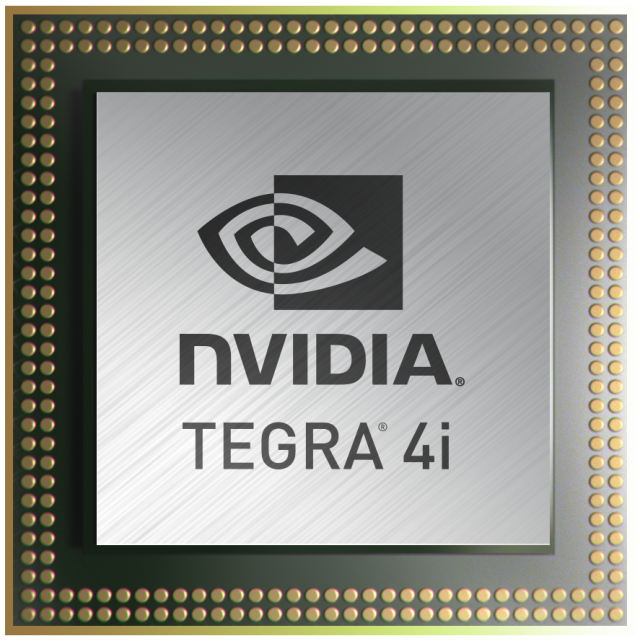
The Nvidia Tegra 4i.
Nvidia is another company that has made its name in the PC world, where it is the leader in discrete graphics and is undergoing a transition to mobile. However, Nvidia is further along in this process than Intel, not only because the company is smaller, fabless, and more nimble, but also because it is feeling greater pressure from the shrinking of the traditional discrete GPU market.
As a company, Nvidia’s strengths lie in graphics, where it has unparalleled expertise in architecture and drivers. Embarrassingly, this expertise is beyond the reach of the mobile products; Nvidia’s unified shader GPUs are too hot for tablets or smartphones and will not be integrated for another couple of years. Wireless is also a potential strength through the acquisition of Icera, which designs programmable multimode modems. Icera’s software-defined radio approach is quite novel and promises several advantages, such as firmware upgrades to new protocols. However, it is also relatively unproven for phones.
Nvidia’s current solutions all rely on standard ARM cores, though Nvidia has added a clever twist with the so-called “companion core,” an extra core that runs background tasks at lower performance (and lower power) than the main cores. This technique relies on certain manufacturing options that will not be available at 20nm. Conveniently though, the company is developing a custom ARM core that should be available at that time and presumably has better efficiency than standard ARM cores. It's Nvidia’s first effort in this area though, and it may take another generation to get things fully polished.
Nvidia’s Tegra line of SoCs has some tablet-design wins, notably the Microsoft Surface, but only recently become a viable option for smartphones. Previously, the SoCs were too power-hungry for a phone form factor and moreover lacked any baseband. Recently though, the company announced a quad-core SoC that integrates the Icera LTE modem and marks the first real chance for Nvidia in the smartphone market. Tablets are less power-sensitive and have been much more amenable to Tegra, although the company has relatively little market share.
In the near-term Nvidia is unlikely to make significant progress. Over a longer time period the company has an opportunity to carve out a position in the mobile market, although it will still be a smaller player than the other four contenders. Compared to the other companies profiled here, Nvidia’s fate is far less certain and involves substantially more risk.
Eventually, Nvidia’s graphics expertise should prove to be rather helpful, but they must survive long enough to successfully integrate an efficient unified-shader architecture into the Tegra line. Similarly, while the company now has integrated multimode modems, the solution is unproven to customers and will take several years to earn design wins and the trust of handset vendors.
Unlike the other companies, which have considerable expertise in circuit design or manufacturing, Nvidia has historically been stronger in architecture and much weaker in the former areas. For example, its first 40nm GPU (Fermi) had significant delays and problems with power consumption. These sorts of issues are vastly more problematic in mobile devices, where power is a first order constraint. Fortunately, the company seems to have recognized these challenges and is taking steps to improve.
Summary
Looking five to ten years out is a difficult endeavor at best, and doubly so for a rapidly changing market such as the one for mobile SoCs. At that distance, the details are indiscernible and only the vague shape is visible. It is clear that the market is growing rapidly, which creates opportunities for both incumbent and new firms. However, much of that growth will be outside the developed world as many feature phone owners upgrade to smartphones.
Right now, the leadership for mobile devices resides in the hands of Apple, Samsung, and Qualcomm. The first two heavily emphasize a vertically integrated approach selling systems based around internally developed SoCs, while the latter is the dominant merchant SoC vendor for smartphones.
Over the next decade, Intel and Nvidia (and others that are beyond the scope of this article) will become significant contenders for tablet and smartphone SoCs. Intel aims to leverage a manufacturing advantage and superior Windows compatibility into a strong position, and it stands a credible chance of becoming a significant player, behind Qualcomm in smartphones and potentially a leader in tablets. Nvidia faces considerably more challenges, although it has made more progress to date, particularly on LTE integration. Both companies are likely to find their fortunes rising in 2015 and onwards as they are able to take advantage of their unique specialties (x86/manufacturing and graphics).
The three leading companies will continue to play a significant role for many years to come and are unlikely to be unseated. Of the three though, Qualcomm is at a particularly vulnerable point, given the tremendous successes with the first generation of LTE smartphones. The market will be substantially more competitive when many competitors also have viable 4G offerings. Fortunately, the market is growing, which provides plenty of opportunities for incumbents and new entrants alike in the coming years.
No comments:
Post a Comment
Let us know your Thoughts and ideas!
Your comment will be deleted if you
Spam , Adv. Or use of bad language!
Try not to! And thank for visiting and for the comment
Keep visiting and spread and share our post !!
Sharing is a kind way of caring!! Thanks again!